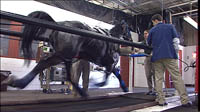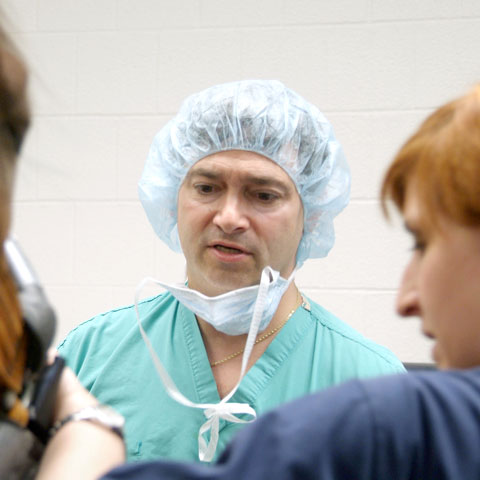Cornell Veterinary Medicine Equine Performance Testing Clinic

This standardbred horse was not racing to expectation. To determine what might be causing this, we began with a lameness exam, which includes flexion tests on the knee and ankle joints in front and on the hock and fetlock joints in the back. Each joint is flexed for 30 seconds and then the horse is jogged. This helps to reveal if there is any soreness in the joint.
Next, the medical service performs a neurological exam to check for any subtle neurological deficit, and to answer the question: "Is he slow, because he's not sure where his feet are?" His eyes are examined and his muscles are palpated for any sign of pain or atrophy. Next, his cardiac output is evaluated.
Then racing conditions are simulated on our high-speed treadmill with the trainer keeping pressure on the racing harness. Another echocardiagram at racing speed is taken. And finally, the horse wears a Holter apparatus for 24 hours, where every heartbeat is recorded. This is where the problem was found - this horse has an arrhythmia, an abnormal heartbeat.




